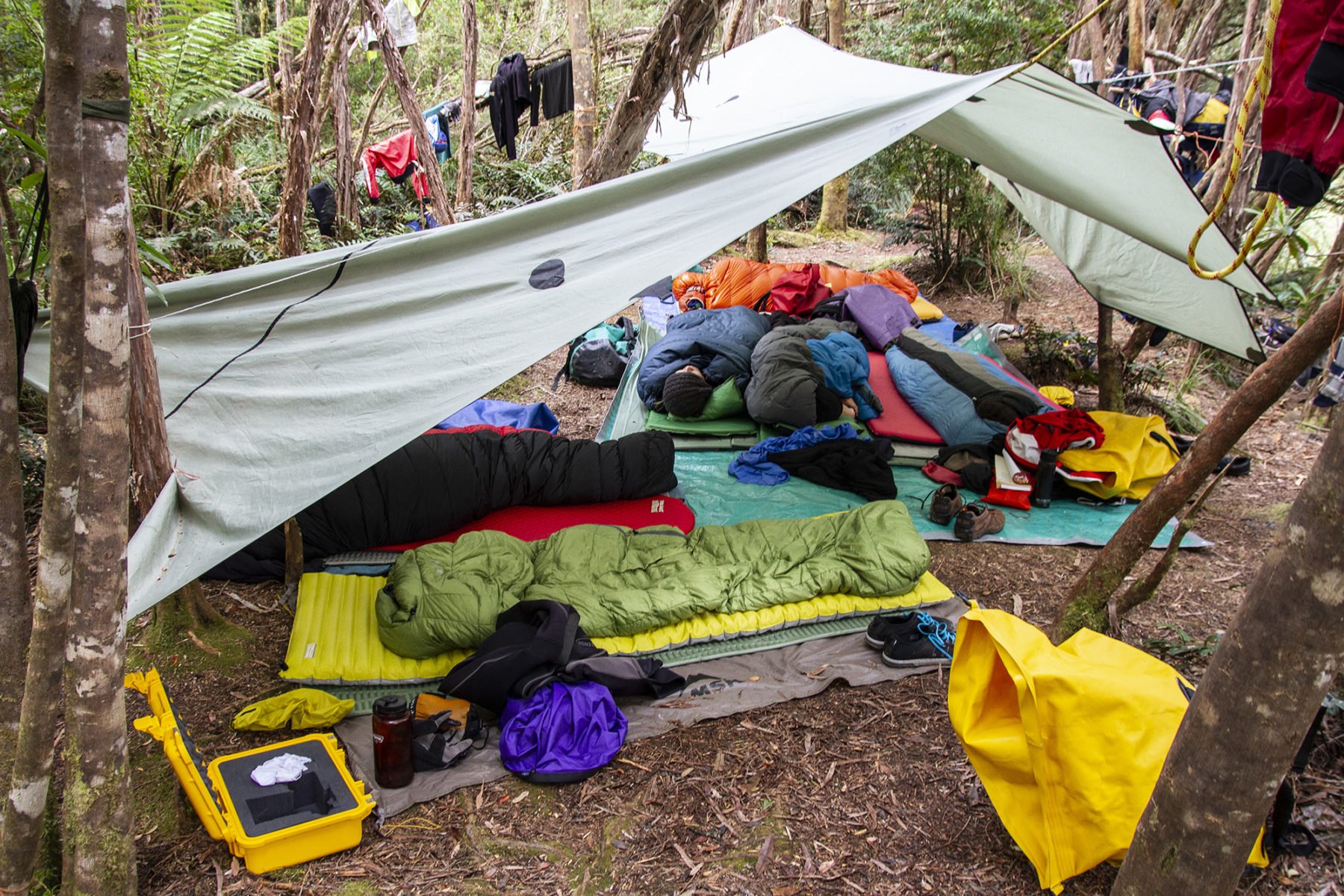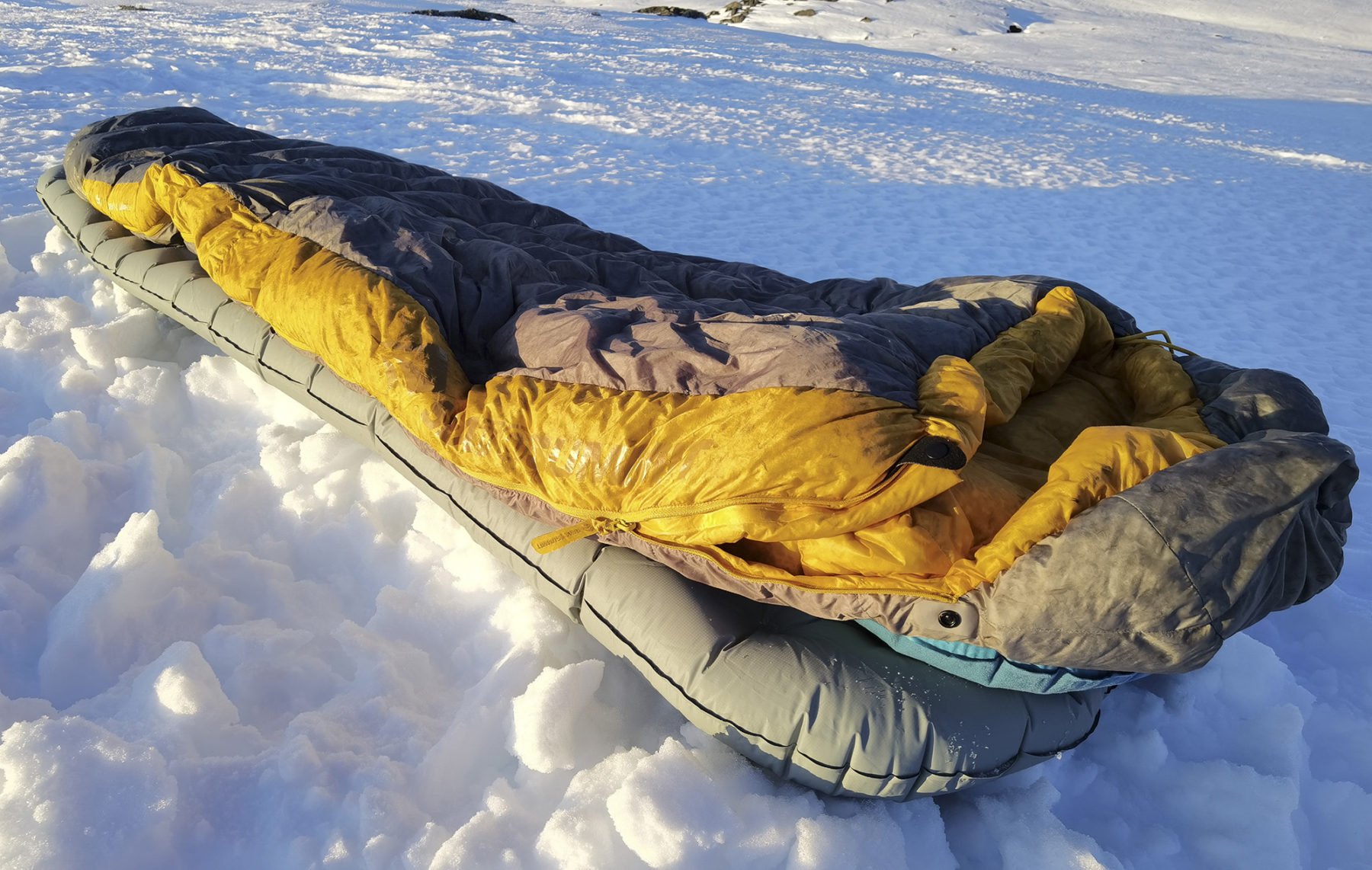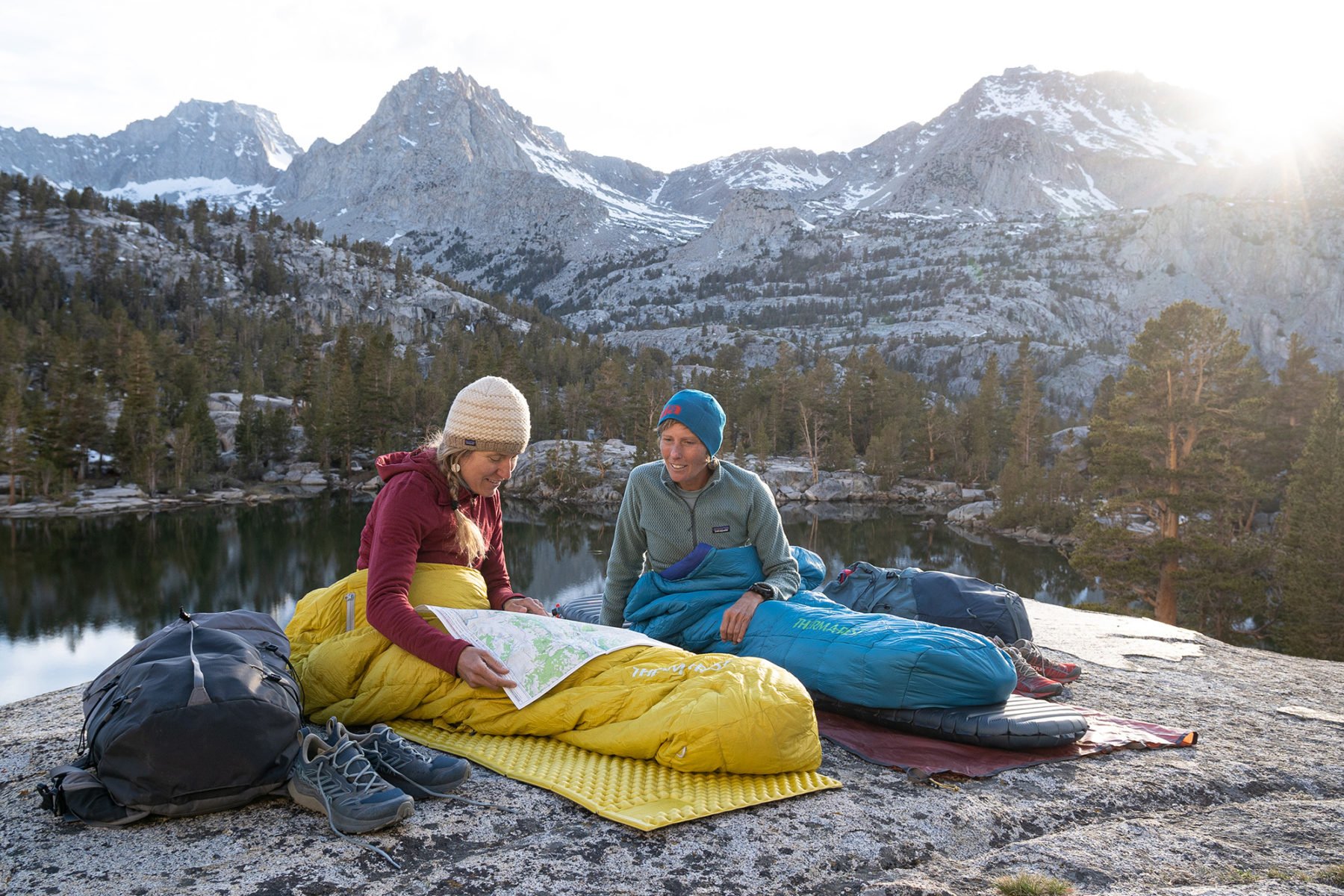The Ultimate Guide To Outdoor Sleep Systems

A sleeping bag is one of the most important pieces of outdoor gear to get right at purchase. Sleeping bags provide shelter, warmth and comfort, so buying the right one for the conditions you are going to experience is paramount.
Sleeping bag choice will be heavily influenced by how your body works; whichever one does the best job of keeping you warm and comfortable will be the bag you need. Your choice will also be influenced by the conditions and terrain in which you will be using the sleeping bag. For the snow-covered alpine regions in winter, you don’t want a three-season sleeping bag. Conversely, for most of us Aussie outdoor fanatics, a three-season bag is actually the most suitable one-bag-to-rule-them-all when it comes to the activities most of us enjoy throughout the year.
A sleeping bag ain’t a simple piece of gear. There are myriad components hidden under that shiny outer fabric that you need to know about, including the shape (style), the type of fill (down or synthetic), the loft figure (yep, we’re getting techy now!) and, of course, the value-for-money equation when balanced against how often you will be using the bag. And don’t get us started on the humble self-inflating mat. Instead, read on for our hot tips on the perfect sleeping bag and mat purchase.
Shaping up for style
Sleeping bag shape (or style) plays a major role in final choice. For the best warmth retention capabilities, a mummy-cut bag is the best option. This is due, as the name suggests, to its body-hugging shape/cut that leaves minimal empty space inside the bag for a human body to warm up. Conversely, these tightly shaped bags can be restrictive – restless sleepers need not apply – so are most used for things like alpine climbing and cold-condition adventures, where every additional degree of warmth is much appreciated.

The semi-rectangular sleeping bag is the most popular style as it combines the more spacious characteristics of a rectangular bag, with just the right amount of ‘free space’ to allow some movement for the sleeper, without too much dead space meaning it takes a lot to warm up inside it.
There are child-specific sleeping bags on the market and, for those whose little’uns range from three up to around 12 or so, these are worth checking out. Not only are they generally a bit cheaper, but they will be far more comfortable for a smaller body in terms of the ability to retain warmth, thanks to there being less ‘empty space’ to heat up. A note of caution for those thinking of going straight to an adult-size bag for their small child: Don’t do it. There have been cases where small children have suffocated inside a large bag as they’ve rolled around in it and not been able to get out again. That’s a very rare occurrence, but is that temporary saving in skipping the purchase of a child-specific sleeping bag worth it? No, we don’t think so, either.
Sleeping bag materials
How heavy a bag is – and how compact it packs – may or may not be important, but it is reliant on the materials used – with the biggest material influence the actual fill type that is used in the bag. The majority of sleeping bags use synthetic fibre (nylon or a variation of) for the outer shell, but buyers have two choices for the fill material: down or synthetic.
For decades, down-fill bags have been the preferred option due to down’s better warmth for weight performance – plus, it also means the sleeping bag will pack down more compact (down is more compressible). For vehicle-based camping, this may or may not be a huge issue, depending on whether you’re traveling in a big Land Cruiser, or a smaller, more compact Subaru Forester SUV, but it is still worth thinking about as it doesn’t take long for four (or more) bulky sleeping bags to start taking up cargo space in the back of your vehicle.
However, it’s worth noting that synthetic fill technology has advanced incredibly in the past decade, to the point now where a synthetic-fill bag is a viable option for even the fussiest sleepers; the latest synthetic fill compresses down quite compact, while offering close to the warming capability of down, albeit still with a weight disadvantage. Again, a 500-gram difference in sleeping bag weights may not be an issue for vehicle-based campers, and you’ll be paying a notable amount less for a synthetic-fill bag.

Down is still the optimal choice for most ‘serious’ outdoor sleepers. Its warmth to weight ratio, its compressibility, it has a longer ‘life’ compared to synthetic, and it is more resistant to odour retention. It does have its negatives, though: if you get your down-fill sleeping bag wet, it will just be wet and cold – it will not offer any warmth at all. There are sleeping bags with a water-resistant down fill now available on the market, but they are pricey. Plus, it is, as mentioned earlier, very expensive.
Synthetic-fill The most notable appeal of synthetic-fill sleeping bags is that they are (sometimes significantly) cheaper, can offer the same warming capability (albeit with a weight penalty), and will retain some warmth even when wet. The synthetic-fill technology is ‘nearly there’ in terms of its warmth when compared to down, but you will pay a weight and bulk penalty for a synthetic-fill bag. Plus, synthetic fill does not (as a rule) retain its warming characteristics for as long as down does (this writer has a down-fill bag that is now 20 years old and its still just as cosy as when new). No matter which fill option you go for, though, always remember to air out the bag once you’re back home. It will keep the interior odour and moisture free for longer, and thus prolonging the usable life of your sleeping bag.
Dossing down
Sleeping bag choice is, like most gear we spend time using, always going to come down to personal choice – and, of course, budget. The best bet when looking for a sleeping bag is to not be shy about testing them in-store – and test as many as you can. If you have in your mind a rough idea of what shape and fill you’re after, i.e., a semi-rectangular, down-fill four-season/0-degree bag, that will cut down the time you need to choose the right one.
In terms of what to look for: an effective hood design; durable zips; sufficient fill; neck collar (for heat retention); sufficient fill (don’t skimp on this); efficient cut (figure out which you prefer: semi-rectangular or mummy).
And don’t be afraid to ask as many questions as you can of the store assistants. Most of these in the camping and outdoor stores are campers themselves, often with many years’ experience, so if you can give them an idea of where you will be using the bag and what you ideally want out of it, you’ll be snug as a bug in your bag, enjoying that starlit outback night before you know it.
The sleeping mat: A base of support
As well as a warm sleeping bag, the other big influence on your outdoor nocturnal comfort is the sleeping mat. Sleeping mats are available in solid-foam versions or the more common (and more luxurious) inflatable air mats.
Inflatable sleeping mats – whether self-inflating or via a pump (or your lungs) – are more expensive than the solid-foam mat but raise comfort levels significantly. There are many variants, with some offering different types of insulation (natural, in the form of down, and synthetic), while others offer reflective material inside the mat that is claimed to reflect and retain your body heat. Then there’s the range of mat heights on offer, ranging from 25mm up to 100mm.

Heat retention
When shopping for a mat, you will see reference to ‘R-value’. This is the warmth rating and is a measure of insulation based on a mat being fully inflated. The higher the R-value the warmer you will sleep. The thickness of a mat doesn’t always correlate to one being ‘warmer’ than the other, so check the R-value of your mat before purchase and also remember to take into account whether you are a “warm” or “cold” sleeper. It is worth remembering that the majority of your body heat does not, in fact, dissipate through your head, but through the mat to the ground.
There are a number of sleeping mats on the market that feature a down or synthetic fill so, even if it does puncture (which is highly unlikely) the mat will still offer some warming qualities due to its fill. Other technology now being used in sleeping mats includes reflective materials that are claimed to reflect a sleeper’s body heat back at them. This also means that mats have become lighter and more compact as this technology effectively “bumps up” the R-value of a mat without adding bulk to the packed size of the mat. How effective this technology is in real situations is hard to quantify and again could be the result of many other factors, such as the individual’s body temperature.
The best advice when looking at a sleep system is to look at both components – the sleeping bag and mat – as one unit, and especially regarding warmth and comfort, as the two ‘work together’ to provide these. This allows you to potentially get away with a slightly less-warm rated sleeping bag if the mat you choose has a slightly higher R-value.
Bedding down
Sleeping mats are available in a number of configurations that reflect their intended use; car-camping mats will invariably be larger as they are usually taller (from 70mm to 120mm of height) and have a softer material layer on the top surface. Some car-camping mats are powered, either by battery or mains, making inflation easy.
For hikers, bikepackers, paddlers and others where packed weight and size is a consideration, there are numerous mat options. Sleeping mats can be rectangular or semi-rectangular – or more notably tapered like a mummy sleeping bag shape. Mats designed to be very light in weight are still quite robust and you can choose from those that are self-inflating (with either synthetic or down fill in some, for additional warmth) or those that you need to inflate yourself. A lot of design and engineering time is spent ensuring these mats offer the best combo of weight, warmth, comfort and durability, and as a result they can be expensive. Having dais that, it doesn’t mean you have to pay a fortune for a sleeping mat: buying from a well-regarded brand that has been producing air mats for years is the safest bet and most of these brands have a wide range of models with pricing that is more palatable. For most Aussie conditions, a three-season mat of around 50mmm thickness is more than enough.
One other option, skewed more toward vehicle-based camping – and a great one if you have the storage space in your vehicle – is a camp cot. Well, really, it’s a fold-up bed that gets the sleeper off the ground and can offer more comfort – but they are fantastic if you are planning on camping at one location for more than a few nights. The other advantage is that, due to these cots being higher off the ground, it’s easier to get up/down from bed. Or is that just our, ahem, slightly advanced age talking there…
A quilt, you say?
More and more adventurers are looking to a lightweight quilt, rather than a sleeping bag, as part of their outdoors sleep system. The quilt’s appeal is multiple: for those who prefer sleeping on their side, they offer more wiggle room, they are often more compact and lighter than a sleeping bag when packed but, when combined with an insulated or high R-value sleeping mat, provide equal warming qualities.
A quilt has only the ‘top’, much like an open blanket, but outdoor quilts can be secured to a sleeping mat (via a strap system attached to the quilt) so they won’t move around too much in colder conditions. The bonus is, if it is warmer, you can treat a quilt just like the one at home and shift it off your legs/torso, etc., to stay cooler. The materials used for the outer – and the fill – are identical to those found in sleeping bags, with down the most popular fill due to its compressibility.
One negative is that a quilt, unlike a sleeping bag, does not have a hood on it for additional warmth. However, don’t forget, a lot of your body heat is actually through your back (when you are laying on a sleeping bag, you are effectively crushing its down or synthetic fill, thus rendering it useless in terms of warming), so combining a quilt with a warm-rated sleeping mat will ensure optimum warming efficiency from your quilt/mat sleep system.
A number of sleeping bag brands now offer quilts as well, such as Therm-a-Rest and Sea to Summit. For most Australian conditions, a quilt is an excellent option for a lightweight hiker or bikepacker, thanks to their light weight and compact size. Whether you can drag yourself away from that favourite sleeping bag or not, it’s worth checking out a quilt as a potential sleep system option.




